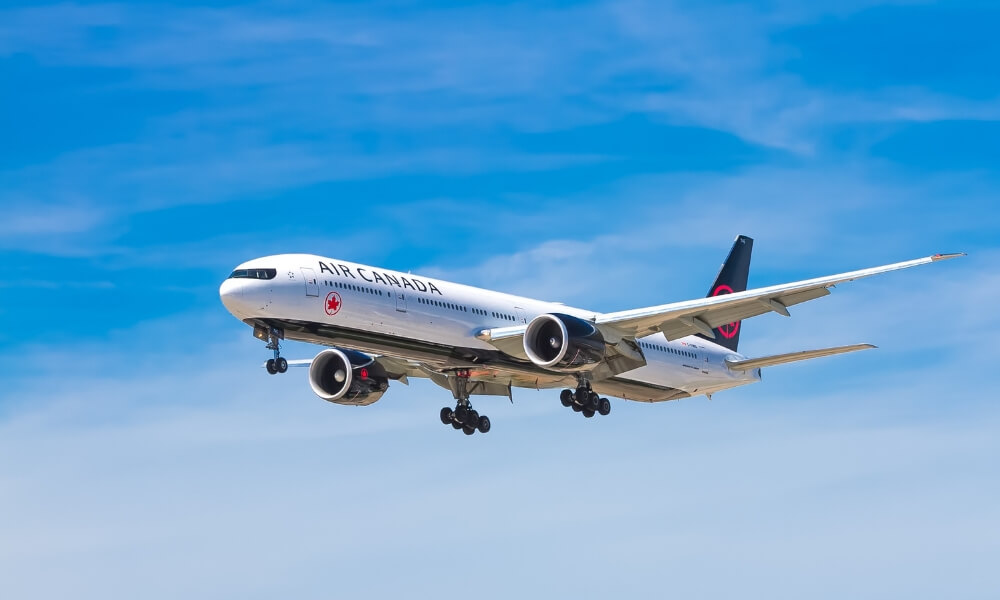How a CT scan and Additive Manufacturing improve the aerospace industry?
Posted By Kat Plewa on Nov 28, 2018 | 0 comments
We already had a few examples of how 3D printing is used in the aerospace industry. In a previous blog post, we talked about 3D printing with moon dust and 3D printed parts on airplanes. Now it’s time to have a closer look at how Additive Manufacturing and CT scanning brings more development and improvement to the aerospace industry.
With our blog post, you will learn what CT scanning is and how it can be applied in the aerospace field. We will also talk about the solutions 3D printing brings to the design and manufacturing process. How can these two cutting-edge technologies improve the industry? Let’s find out!
What can be advanced?
The main issue of the aerospace industry is the weight of different parts. The heavier the aircraft, the more fuel it needs. That means higher costs and also a very bad effect on our environment. As far as the costs go, it is not only about the fuel, but also the production costs of the parts. Of course, they have to be at the highest quality for safety reasons which means manufacturing them is expensive.
Another problem engineers are facing nowadays is testing the parts. They can’t look inside the part to see if the parts are correct and safe to use. Each part has to meet different and very rigorous requirements. Traditional Nondestructive Testing (NDT) inspection methods are very time-consuming and not effective. It’s also easy to make a mistake. There are a limited amount of analysis techniques to detect any dysfunctionalities of the object and they don’t allow for a proper internal view.
How can we face those issues?
The challenges we are facing with NDT are clear; the process is not efficient enough and the information about the tested object is incomplete. Also, for the future development of the aerospace industry, the parts have to be lighter. But the problems are addressed and can be easily solved with 3D technologies.
CT scanning, otherwise known as X-Ray computed tomography, is a technique which allows us to look inside objects. It is one of the latest trends to be used is the mechanical engineering field, but will definitely become more popular as sometimes it’s the only way of testing mechanical parts. For engineers, this is a revolutionary technology, allowing them to develop new parts in a more efficient way. A CT scan works similar to some 3D scanning methods. It takes many pictures from different angles and creates a 3D image of the part.
Now that engineers can see through the parts, they can also use different design solutions to make the parts lighter, such as lattices. 3D printing gives them new possibilities to develop mechanical parts in a more efficient and innovative way. With Additive Manufacturing, engineers can design new features to lower the weight of the parts, keeping them strong at the same time. And they can be assured to be safe and robust with CT scanning.
This NDT technology provides engineers with crystal clear images of the tested part, showing any fragile places and hidden part failures, providing crucial data from the first stages of prototyping through to production. CT scans will show any uneven material flow and cracks; check density; and substrate bonding issues. It also allows for better optimization and reducing the weight of the parts as new design possibilities can be tested.
CT scanning also means much better time management. It can really speed up the manufacturing, as just a few minutes of scanning can substitute days of analyzing the porosity with traditional NDT techniques. Thanks to CT scans the production gained valuable time and became more efficient. It also eliminated potential problems that could have been caused in post-production.
Real life example of using 3D printing and CT scanning
To showcase the importance of CT scanning and Additive Manufacturing we should talk about an authentic example, such as a bell crank of helicopter’s rotor blade. It was 3D printed with titanium-aluminum alloy to improve weight optimization. The weight of the bell crank was the key factor in the design improvement and could only be achieved thanks to Additive Manufacturing. Before 3D printing, we could only dream of reducing the weight of mechanical parts by 30%!
As the bell crack was a part of a helicopter, of course, safety had the highest priority. With CT scanning engineers were able to check factors like precision bores and their diameters, quality of deformations such as the parallelism exposed by the crank arms. Machining process reproducibility and part’s fatigue strength were proven by testing the size, location, and geometry of remaining gas inclusions. And all of that possible only thanks to CT scans.
Get started with 3D printing to improve your production today
As you can see Additive Manufacturing brings innovation and is so efficient that even helicopter parts are 3D printed now. 3D printing eliminates time-consuming tooling, allows for the production of highly complex geometries, and makes it possible to redesign solutions perfectly fitting your manufacturing needs. It can bring manufacturing costs down and optimize material usage thanks to the ability to edit the internal structure of your parts.
Start improving your production with Additive Manufacturing before your competitors do. You don’t need your own 3D printer for that, with an online 3D printing service like Sculpteo all you have to do is upload your 3D model to our website and we will deliver it straight to your door.
Don’t forget to sign up to our Newsletter and follow us on Facebook to get the best 3D printing News!


 Connect with Google
Connect with Google Connect with Facebook
Connect with Facebook